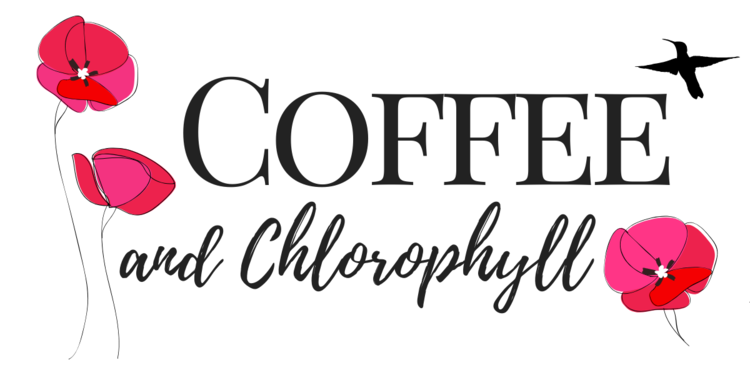Planting Crabapple Trees
Now that we are settled in for our first spring at our new house, we are planting crabapple trees. For those of you who don’t already know, we have to live on-sight for Hunter’s job. When he told his boss we were planting some crabapple trees in the yard, his boss rolled his eyes and said, “Ew, you guys are excited to plant crabapples?! What’s special about those?"
Let me tell you why we love crabapple trees!
Birds love Crabapples
The property where we used to reside was dotted with chokecherries, juniper berries, native plums, nanking cherries, wild grapes, and crabapples. While all of these plantings offer some fruit to entice the birds, none were so popular amongst my backyard flock as the Crabapple Trees. I had no interest in crabapples prior to living there, but I was quickly converted! The birds love crabapples—and so do I!
Crabapple Trees offer four seasons of interest
In addition to being totally beloved by my backyard birds, the crabapple trees in our last yard offered some sort of interest all year round. In early spring, the cultivar we had produced these beautiful dark red buds, that burst forth with clouds of bright pink blossoms. For two weeks, the blossoms buzzed with the activity of bumble bees and honey bees. Then in summer, as the final pink petals fell away, the foliage faded to a glossy green and the made the tree perfect for shade. Many birds sheltered in it’s dense branches and full foliage. Slowly, as the crabapples grew in size, the tree became flecked with lovely red fruits. In fall, the foliage blazed in shades of amber and orange, which complimented the red crabapples beautifully. The apples clung to the bare branches well into winter, and provided a feast for wildlife. Deer, wild turkeys, squirrels, and my backyard birds all enjoyed the fruits. And so, if you are looking for a tree with year-round interest—plant a crabapple!
Crabapples are great for pollinators
Crabapple trees bloom early in spring, providing an excellent early source of pollen and nectar for the bees, at a time when not much else is in bloom. On an early spring day, the crabapple trees vibrate with the busy buzzing of bumble bees, honey bees, and native bees are all types. It’s truly an incredible sight (and sound) to behold!
Crabapples are great companions to apple trees
Because crabapple blossoms can be used to pollinate many types of apple trees, they are an excellent pollenizer companion to plant when you have apple trees nearby.
I’ve heard crabapple jelly is out-of-this-world
I don’t have any personal experience making crabapple jelly, but I have had dozens of people tell me how delicious it is—many have even told me it’s their favorite jelly! When these new trees begin fruiting substantially in a couple of years, I will give it a whirl, and try my hand at making some.
Crabapples are low maintenance
In my humble opinion, unlike traditional apple trees, crabapple trees are very low maintenance and easy to grow. They are cold hardy, which is definitely a necessity for Wyoming, and they have been known to grow excellently at higher elevations. Most cultivars stay on the smaller side—less than 20 feet tall and wide. And they are often times very well-mannered in the landscape. Aside from cutting back any suckers, not much pruning is needed, which is fine with me! And there are so many cultivars available, nowadays, that you can get exactly what you are looking for in terms of disease resistance, size, color, fruit persistance, etc. I’m linking below to a great Chart of Crabapple Cultivars. If you deal with any fire blight, apple scab, powdery mildew, or cedar apple rust, in your area, then you can look for a variety that is resistant to those diseases.
In order to get a cultivar of Crabapple tree that we wanted, we had to place a special order from our local nursery. All I have been able to find around town are two varieties—Snow in Spring, which does not fruit, and Royalty. I referred to the aforelisted chart to find a few varieties I would prefer, and of the choices, my local nursery was able to special order in PrairiFire. So we got two trees for our backyard, and planted them just a few days ago. We are excited to see these transform as the years go by.
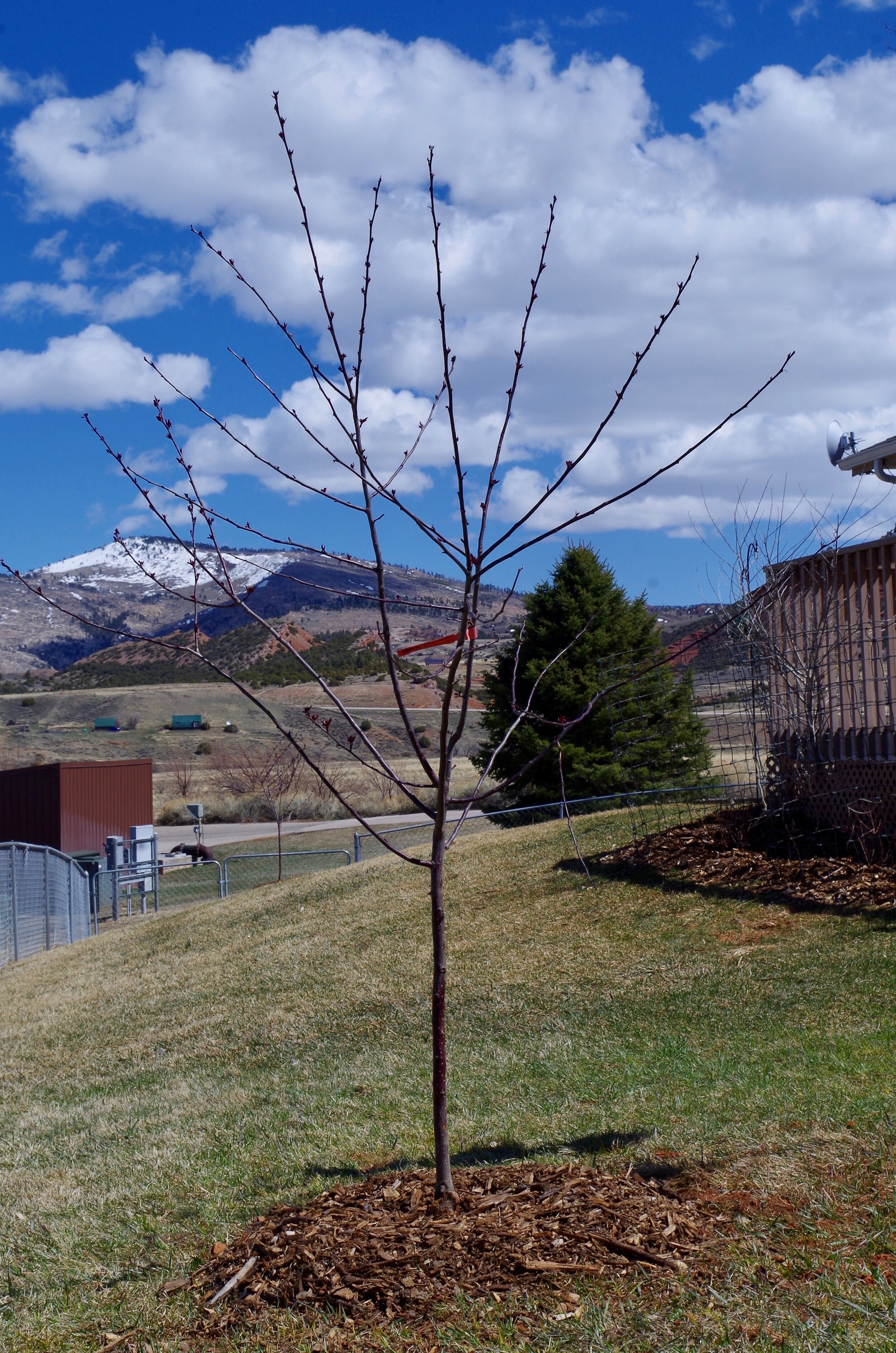
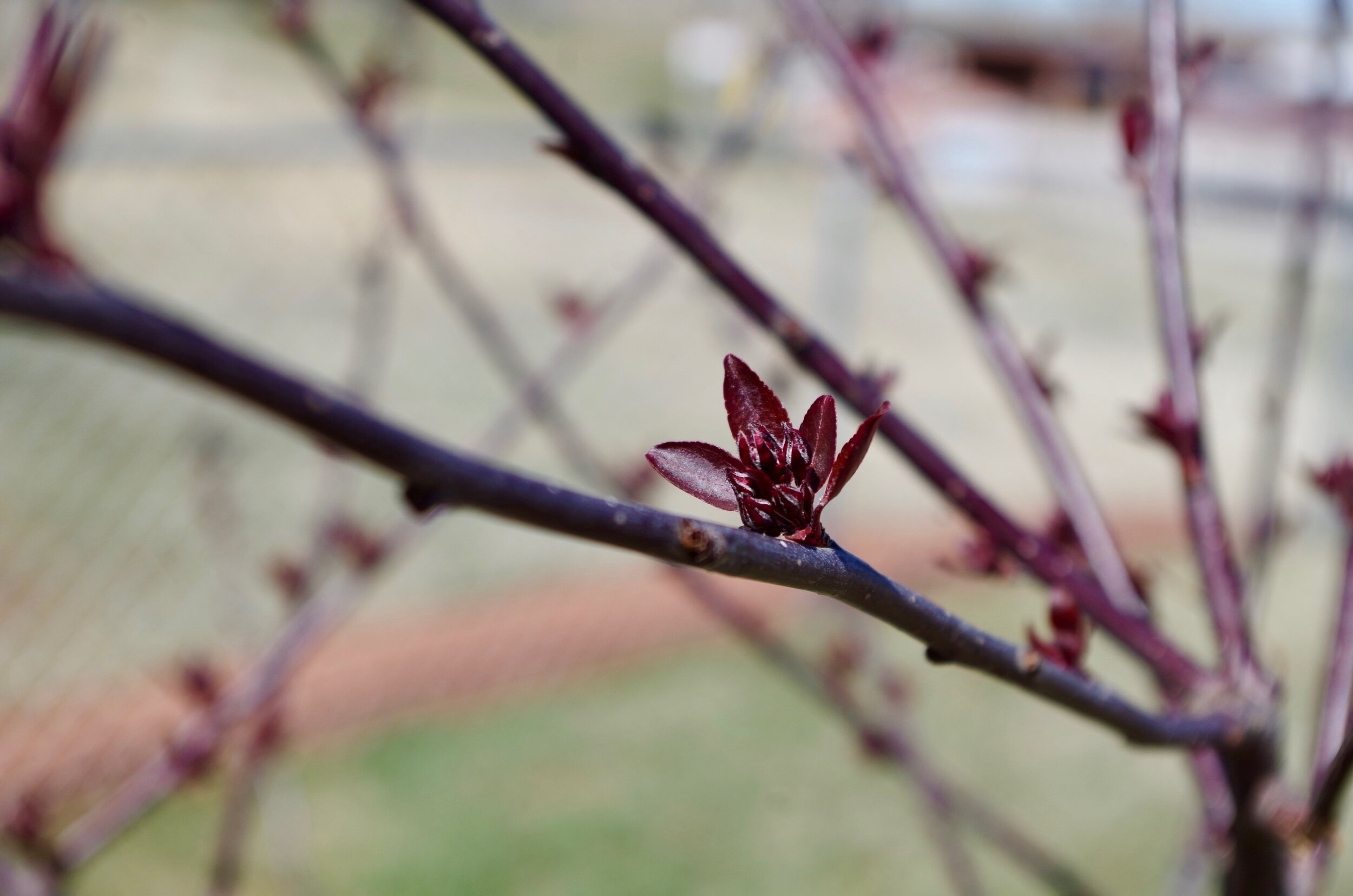
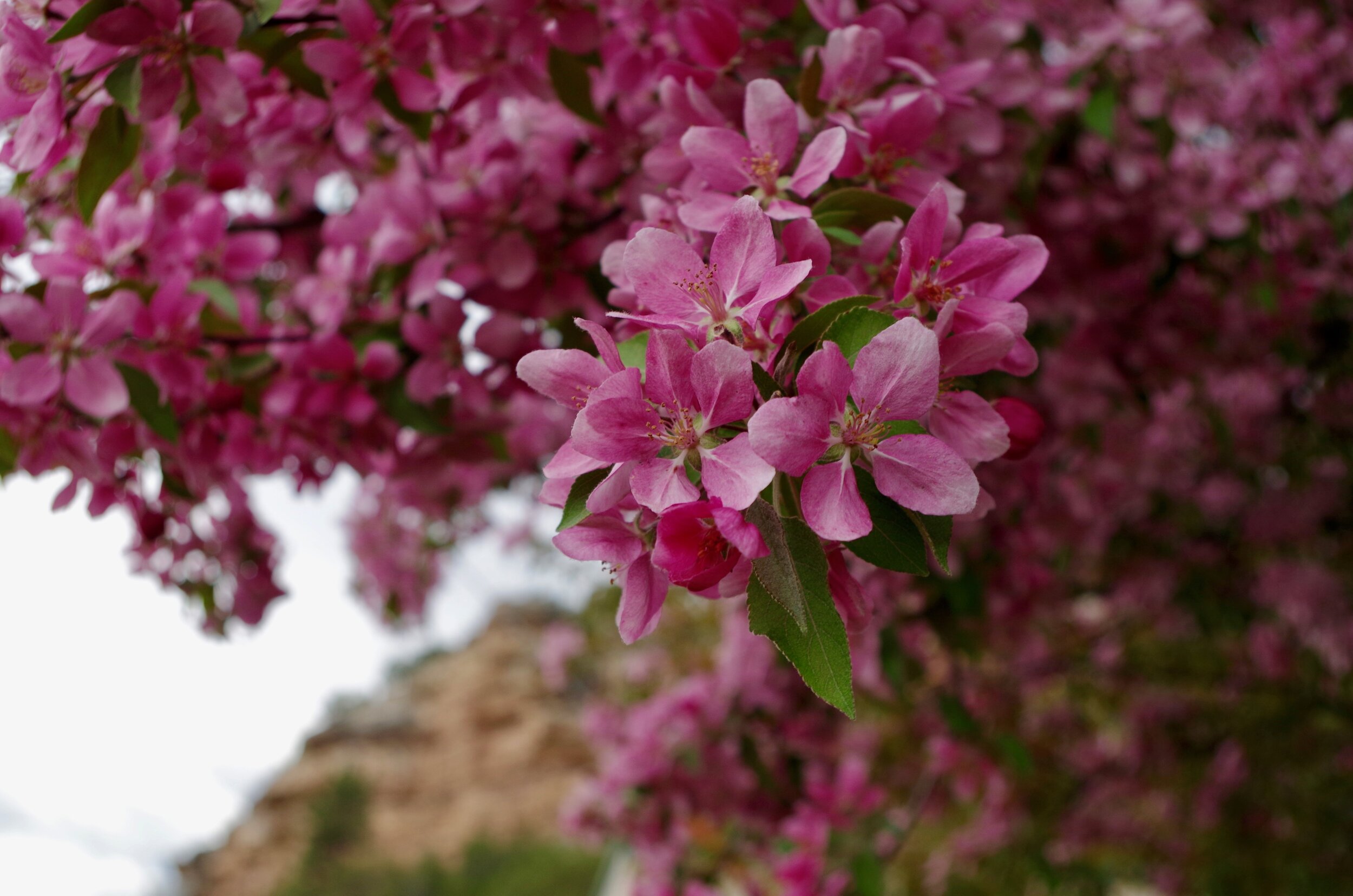
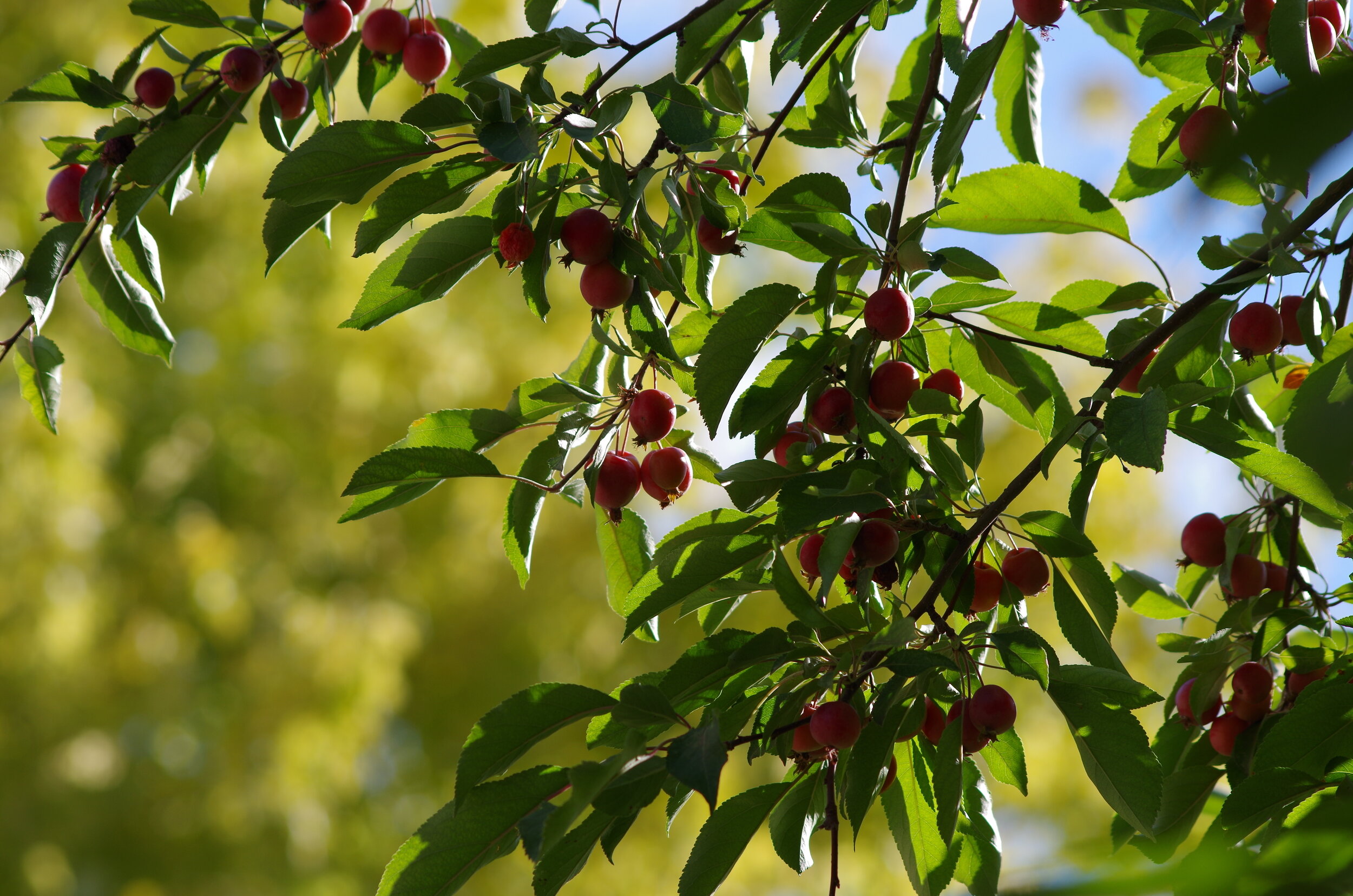
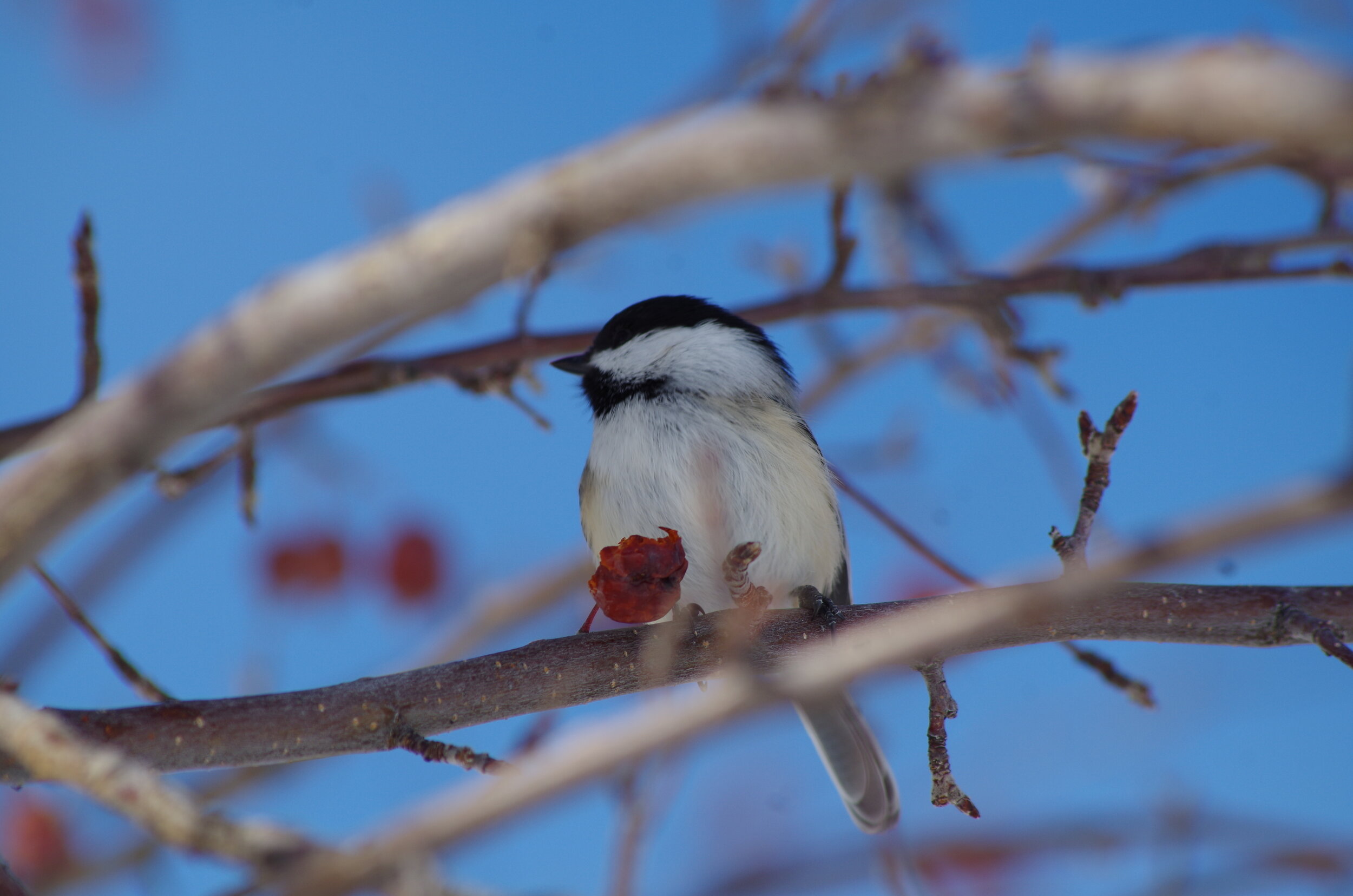
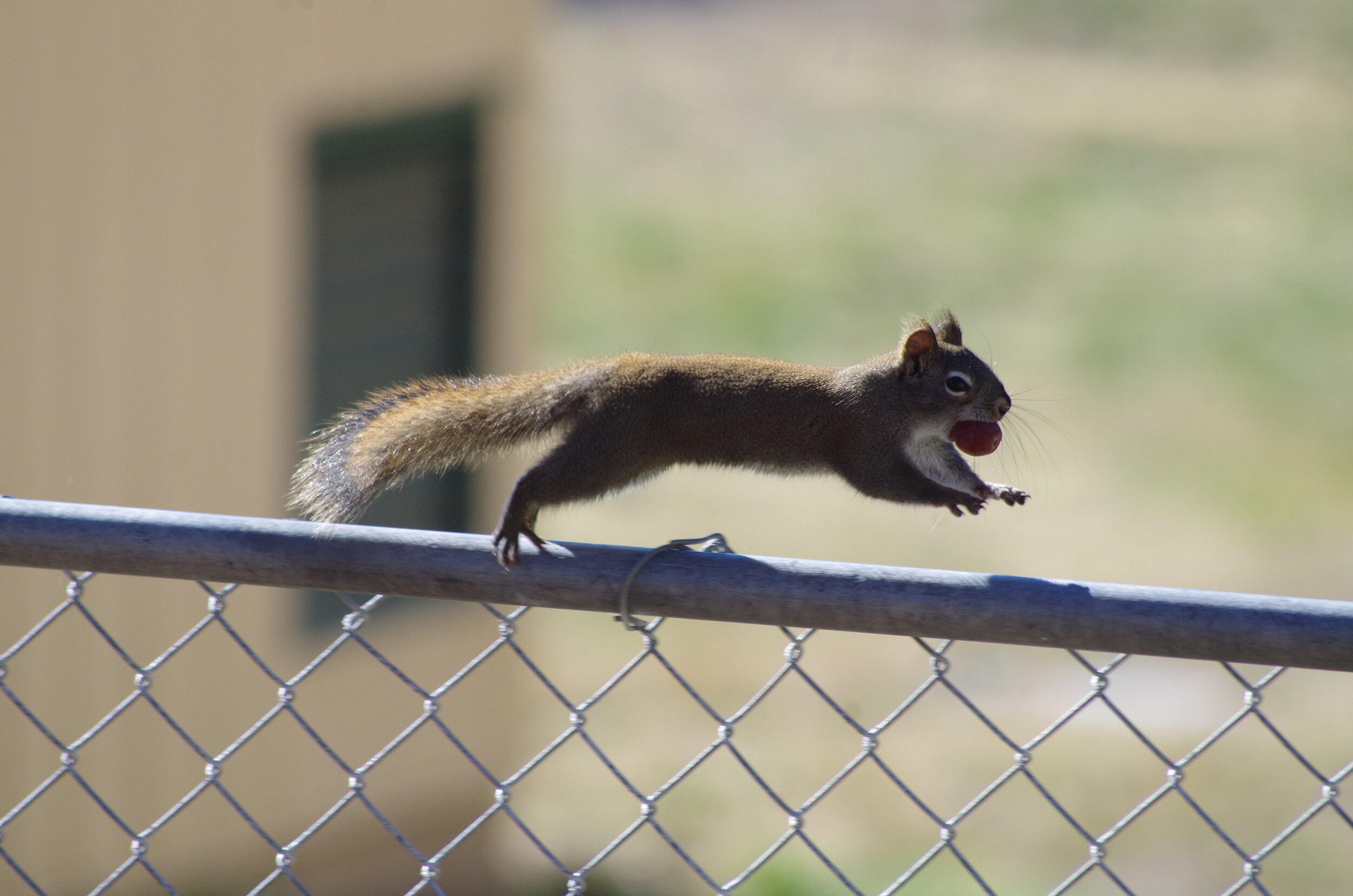
Do you have any crabapple trees in your landscape? Please share what cultivar of crabapple you are cultivating in your yard, and what you love (or don’t love) about it, in the comment section below.
